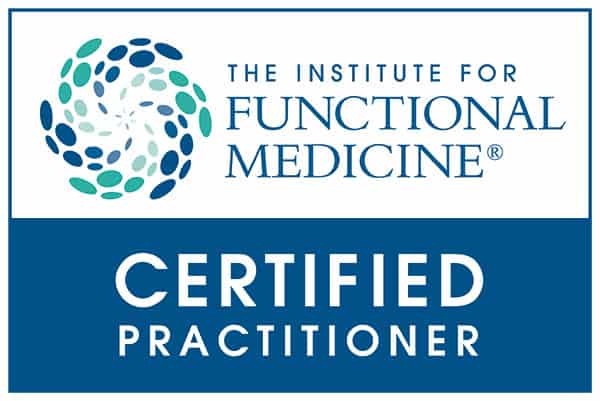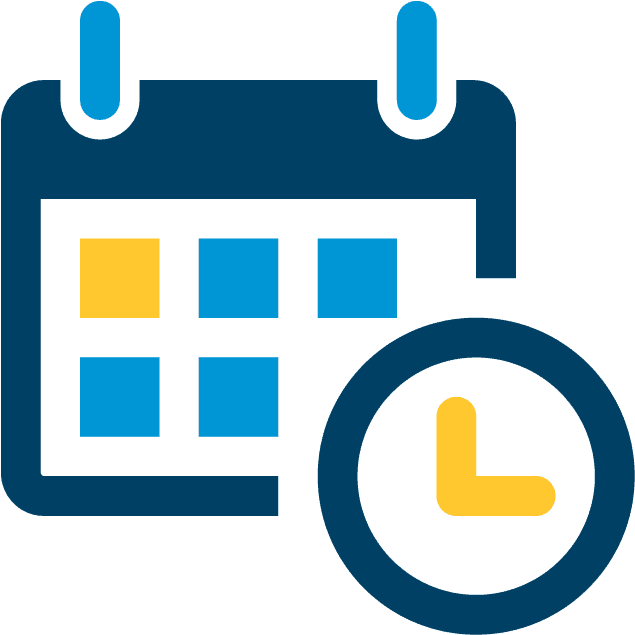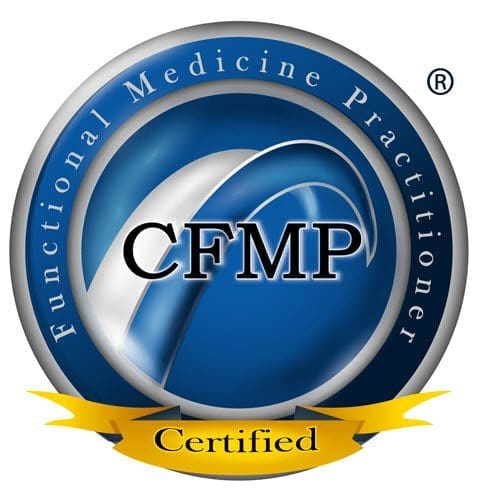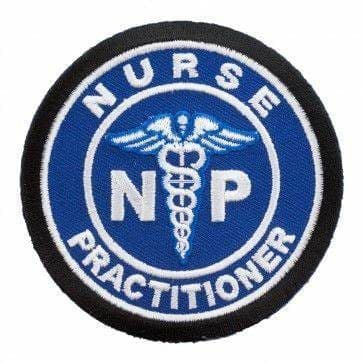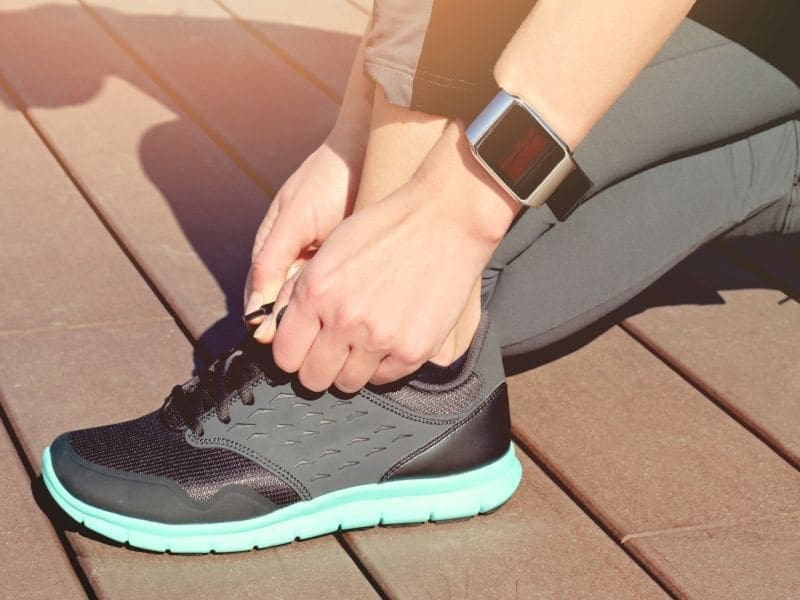
by Dr Alex Jimenez DC, APRN, FNP-BC, CFMP, IFMCP | Health News El Paso
(HealthDay News) — Wrist-worn activity trackers such as Fitbit don’t reliably assess heart rate, a new study finds.
While the devices may have some legitimate benefits, they shouldn’t be used for medical purposes, researchers suggest.
Evaluating four wearable activity trackers from Fitbit, Basis and Mio, the investigators compared results to those from an electrocardiograph (EKG). The researchers found results varied among the different models, and were much less accurate during exercise than at rest.
“These devices are probably good enough to inform consumers of general trends in their heart rate — high or low — [but] it’s important to have more accurate information when physicians are relying on this data to make decisions on medications or other tests and treatments,” said Dr. Mitesh Patel.
Patel is an assistant professor of medicine and health care management at the University of Pennsylvania. He wasn’t involved in the study.
However, the study’s lead author cautions against making too much of the discrepancies.
“At any moment, the tracker could be off by a fair bit. But at most moments, it won’t be,” said Lisa Cadmus-Bertram, an assistant professor of kinesiology at the University of Wisconsin at Madison.
“The heart-rate feature performed better at rest,” she said. “They’re not as precise during exercise.”
A 2014 survey by PricewaterhouseCoopers found that 20 percent of American adults owned a wearable activity tracker.
For the new study, 40 healthy adults, aged 30 to 65, were recruited to test the Fitbit Surge, Fitbit Charge, Basis Peak and Mio Fuse.
Generally, when compared with the EKG results, the activity trackers were near the correct mark, Cadmus-Bertram said. But occasionally, their estimates of heart rate could swing too high or too low.
At rest, the Fitbit Surge was most accurate; Basis Peak was least accurate, the study authors said.
During exercise on a treadmill at 65 percent of maximum heart rate — defined as 220 beats per minute minus age — accuracy suffered more.
The monitors could overestimate heart rate by as much as 39 beats per minute (Fitbit Surge), or underestimate it by as much as 41 beats per minute (Fitbit Charge), the study found.
The findings support those of a study released last month at the American College of Cardiology annual meeting. Depending on the type of activity, the wrist devices were up to 34 beats per minute off, those researchers found.
Again, the devices were least accurate during exercise.
Some wrist-worn activity trackers use a light-emitting diode, or LED, that measures heart rate by detecting changes in the amount of blood in the skin.
Patel said accuracy may be a problem because the devices move around on the arm, especially during exercise.
Meanwhile, Fitbit’s maker said its fitness trackers aren’t intended to be medical devices. The company issued a statement in response to the new study.
“We conducted extensive internal studies which show that Fitbit’s PurePulse technology performs to industry standard expectations for optical heart rate on the wrist,” the statement said. Moreover, “Fitbit devices were tested against properly calibrated industry standard devices like an EKG chest strap across the most popular activities performed worldwide — including walking, running, biking, elliptical and more.”
Cadmus-Bertram cautioned that the data for the new study were collected about a year ago.
“Not only have newer models since been released, but the algorithms behind the data are presumably being updated and improved on a regular basis,” she said. “So the results we found might be different if we did the study again now.”
In general, she’s remains a fan.
“On the whole, fitness trackers still provide a tremendous amount of useful information to the average user who just wants some feedback to help them to increase their exercise level,” Cadmus-Bertram said.
The study findings were published online April 11 in the Annals of Internal Medicine.
SOURCES: Lisa Cadmus-Bertram, Ph.D., assistant professor, kinesiology, University of Wisconsin-Madison; Mitesh Patel, M.D., M.B.A., M.S., assistant professor, medicine and health care management, Perelman School of Medicine and the Wharton School, University of Pennsylvania, Philadelphia; Fitbit, statement, April 10, 2017; April 11, 2017, Annals of Internal Medicine, online
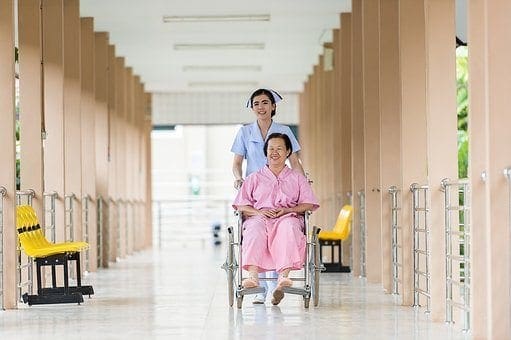
by Dr Alex Jimenez DC, APRN, FNP-BC, CFMP, IFMCP | Health News El Paso
(HealthDay News) — When a bedside alarm goes off in a child’s hospital room, anxious parents expect nurses to respond pronto.
That rarely happens, however, and a new study helps explain why.
Reasons Why Response Time In Question
Researchers found that nurses are usually quick to react when alarms are urgent. But, they’re slower to respond at the end of the workday or when they suffer from “chronic alarm fatigue.”
Also, having parents present doubled the response time on average, the study found.
But, delayed response time didn’t threaten any of the 100 patients evaluated in the study, the researchers said. And just half of 1 percent of more than 11,000 alarms analyzed were deemed “actionable,” or crucial.
“The nurses were overall doing a great job predicting which alarms were going to be important,” said study lead author Dr. Christopher Bonafide, an assistant professor of pediatrics with the Children’s Hospital of Philadelphia. “Their intuition was correct.”
The high number of false alarms in U.S. hospitals has led to “alarm fatigue” among nurses. As a result, the Joint Commission — the organization that accredits American hospitals — issued new guidelines for managing alarm monitors.
The beeps and buzzes alert staff to medical problems facing patients such as high heart rates, dips in oxygen levels in the blood and dangerous heartbeat patterns, Bonafide said.
Too Many False Alarms
But, many false alarms are caused simply by babies moving around and disrupting sensors, he said.
“When an alarm goes off and the nurse is already in the patient’s room, they can immediately look up, check on the patient, and make sure everything is OK,” Bonafide said. “When a nurse isn’t in the room, some hospitals like ours have the ability to send them a text message to the phone that they are carrying.”
For this study, researchers analyzed video of 38 nurses caring for 100 patients at Children’s Hospital of Philadelphia from 2014-2015.
Almost all of the 11,745 beeps and buzzes that sounded were valid. And 50 were deemed critical, “the important ones we would not want anyone to miss,” Bonafide said. Nurses responded in about a minute, on average, to these alarms.
However, overall, half of the total alarms took 10.4 minutes or more to address, the study found.
Years on the job and caseload accounted for some differences in response time.
“Nurses with under one year of experience responded faster than nurses with one or more years’ experience,” Bonafide said. “Nurses taking care of just one patient responded faster than those caring for more than one patient. And for each hour that passed in a nurse’s shift, their response time got a little bit slower.”
Other factors appeared to contribute, too.
“If family members were absent from the bedside, response time was faster than if parents were there,” he said. The median response time was six minutes when family members weren’t there, and 12 minutes when they were.
Also, “more complex” patients got faster responses, Bonafide said. “And patients who had prior alarms that required interventions to be taken got faster responses than those who had not had those experiences.”
Marjorie Funk, a professor at Yale University School of Nursing, praised the study. She said the findings shouldn’t worry parents about leaving their child’s side at hospitals.
“Alarms for serious events sound different, and nurses respond immediately,” Funk noted. “Other alarms may require their attention, but they can finish what they are doing for another patient before responding or can ask a colleague to respond.”
Bonafide said there are no guidelines that tell nurses how quickly they should response to various alarms. But, he thinks the system needs improvement.
“There’s quite a lot we can do to improve the safety and performance of these systems and make them work for us and provide truly useful information that helps nurses identify patients who are getting into trouble,” he said.
When a child is hospitalized, Bonafide and Funk agreed that it’s appropriate for parents to ask questions. These might include asking physicians and nurses, “Why is my child being continuously monitored? What problems are you looking for?” and “What should I do if an alarm goes off?”
The study appears in the April 10 issue of JAMA Pediatrics.
SOURCES: Christopher Bonafide, M.D., assistant professor, pediatrics, Children’s Hospital of Philadelphia; Marjorie Funk, Ph.D., RN, professor, nursing, Yale University School of Nursing, New Haven, Conn.; April 10, 2017, JAMA Pediatrics
News stories are written and provided by HealthDay and do not reflect federal policy, the views of MedlinePlus, the National Library of Medicine, the National Institutes of Health, or the U.S. Department of Health and Human Services.

by Dr Alex Jimenez DC, APRN, FNP-BC, CFMP, IFMCP | Arthritis, Fitness, Wellness
“Oh, my aching back!” I can’t tell you how many of my students have back issues. And it’s no wonder, considering most of us spend our days tied to our desk chairs and parked in the same position in front of our screens hour after hour. The problem: Sitting for prolonged periods can cause or exacerbate back issues. When we’re stuck in this position, our hip flexors shorten in front and pull on our lower back. Not to mention, constant slouching can lead, over time, to compressed disks. That’s why it’s crucial to stretch your back every day. Here, four moves you can do right in your office.
RELATED: How Chair Yoga Can Help Your Arthritis
1. Backbend Arch
Start seated at edge of chair, placing hands behind you with fingers facing away from hips. Prop yourself up on fingertips, drawing sacrum in and up to lift lower back. Follow backbend all the way up chest to shoulder blades and open up entire front body. Hold and breathe for 8 to 10 breaths, then release.

2. Cat/Cow
Sit at edge of chair with feet flat on the floor. Place hands on knees and inhale, lifting chest and sticking hips out behind you. Lift gaze, open chest, and gently squeeze shoulder blades together (A). On an exhale, round chest, scoop in belly, and curl tailbone under as you drop head toward sternum (B). Repeat for a series of 10 cycles.
RELATED: 10 Yoga Poses to Do at Your Desk

3. Lower-Back Circles
Sit with feet hip-width apart and hands resting on knees (A). Inhale, then begin circling torso clockwise, making sure to initiate movement from base of spine (B). Complete 8 to 10 rotations. Stop and then repeat the motion, this time circling in a counterclockwise direction. Continue alternating for 2 to 3 minutes.

4. Roll-Downs
Sit with feet hip-width apart and hands hanging at sides (A). From head, start rounding down through spine (B). Exhale, letting forehead release forward and the weight of your head bring you over until top of head is by thighs (C). Inhale; slowly start stacking vertebrae as you round up to sit. Draw belly button to spine to protect back, and feel the articulation as you round up. Continue rolling down and up for 5 to 8 cycles.
Pin this entire workout for later:

Adapted from Chair Yoga: Sit, Stretch, and Strengthen Your Way to a Happier, Healthier You by Kristin McGee ($19; amazon.com). Copyright 2017 by Kristin McGee. Reprinted by permission of William Morrow, an imprint of HarperCollins Publishers.

by Dr Alex Jimenez DC, APRN, FNP-BC, CFMP, IFMCP | UTEP (Local) RSS
Related Articles
UTEP Volleyball�s head coach Holly Watts announced the addition of Abby Adams for the 2017-18 campaign on Tuesday.
�I chose UTEP because of the competitive Biology academic program, and the Pre-Dentistry curriculum,� Adams said. �I am excited about all the courses they have to offer. UTEP is a beautiful campus, and a university full of tradition. I am looking forward to being a part of the University of Texas at El Paso and the volleyball program.�
Adams is 5�8 from Valor Christian High School in Highlands Ranch, Colo., where she played at the defensive specialist position for three years.� During her time with the Eagles, Adams took the court in 157 sets as the starting libero while tallying 440 digs at 2.8 digs per set, 56 assists, 19 service aces and 14 kills.
The Valor Christian squad wrapped up the 2016 season by finishing in the Final Four of the 4A State Volleyball Tournament for the second time in school history. Adams finished her senior campaign earning accolades for her work in the classroom and on the court.
Her awards included being named to the�2016 CHSAA 4A First-Team All-League, CHSAA All-State First-Team All-Academic, CHSAA All-State Honorable Mention and 4A Honorable Mention All-Academic.
�We are excited to add Abby to our roster for the 2017 season,� Watts said. �Abby comes in with her experience as a defensive player and specifically libero, she will bring additional ball control and experience at a high level to our�gym.
�We are thrilled she has decided to come to UTEP and bring her back-row prowess with her. She is playing again this club season with a quality club and great coaches and she will continue to gain experience even before her arrival.�
Aside from high school volleyball, Adams played club volleyball since the age of nine. She plays for Colorado Juniors 18 Jess, who will play in the 18 Patriot Division of the 2017 Girls��Junior�National�Championships (GJNC) in Minneapolis this summer.

by Dr Alex Jimenez DC, APRN, FNP-BC, CFMP, IFMCP | Chiropractic
On the left: regular green tea. On the right: microwave boosted. Not that you can tell from the picture.
It�s been a rough news week, and it�s only Wednesday. Fortunately, though, today�s raging controversy is about tea. Is it okay to microwave it? Is it better to microwave it? Australian research says yes, while tea aficionados worldwide recoil in horror.
�The claim,
broadcast on ABC Radio Sydney, is that you can extract slightly more antioxidants (specifically
catechins) if you pop the tea in the microwave while it�s steeping. Quan Vuong and his team at the University of Newcastle in Australia have been comparing different ways of steeping green tea, and in a
2012 paper they describe a method that gets you more of the good stuff than your typical method, but is still practical to do at home. The news article gets the procedure a little mixed up, but here is what the scientific paper describes:
- Boil water, and pour it over your tea bag. Steep at least 30 seconds.
- Put the cup (with teabag) into the microwave for one minute at half power, or whatever power setting will get you 500 watts.
- When you remove the tea bag, dunk it up and down ten times and then squeeze it out.
The idea is to help people get the health benefits of green tea, without having to guzzle five or more cups a day. Regular brewing can extract 62 percent of the tea leaves� catechins and 76 percent of the caffeine. The microwave boost gets you up to 80 and 92 percent. That�s not a huge difference, but hey, it�s something.
So how does it taste? I brewed two cups of plain green tea, letting one steep for three minutes and doing the microwave protocol, which took about three minutes anyway. I dunked and squeezed both tea bags as I removed them.
They tasted almost identical, although I could detect a little more of a bitter and astringent taste in the one that had been microwaved. Vuong and crew write in their paper that tea brewed this way can be a little stronger, so you may want to use a flavored green tea instead of a plain one, to cover up any tastes you don�t like.
One problem: I don�t love green tea. And a lot of the British outlets reporting on this study are probably with me on that. Black tea is probably what they�re thinking of. So I brewed some more tea for science, this time a mango-chili flavored black tea. Again, they were similar but the microwaved tea was slightly more bitter and astringent. It also had more of the chili flavoring, which was nice.
If you are fussy about how you prepare your black tea, you probably know that steeping it too long can make it bitter. Flavor-wise, this technique is just a quicker way to steep it too long. That said, it�s not bad. If you�re already the kind of person who steeps a teabag for more than five minutes, or who might even use the same teabag more than once (which my favorite fancy caf� actually recommends, so spare me the �how dare you�), you�ll like this just fine.

by Dr Alex Jimenez DC, APRN, FNP-BC, CFMP, IFMCP | UTEP (Local) RSS
Related Articles
The UTEP football team will conclude spring drills on Friday at 6 p.m. with the annual Spring Game in the Sun Bowl.
Gates will be open to the public starting at 5 p.m. and admission is free. Parking will be available north of P-9 and outside parking lots. Consessions will be open to fans along, with food trucks in the concourse. The first 300 students will receive a free tank top.
Fans will get to see a variety of different lineup combinations, a live scrimmage and simulated game situations. Special in-game videos will pit the players against the coaches in a variety of grueling activities.
After the game, the seniors and head coach Sean Kugler will sign free complimentary spring game posters. There will also be a free football clinic for youth 13 and under.
Roster Rundown
UTEP returns 44 lettermen (21 offensive, 21 defensive and two special teams) from the 2016 team. The Miners have 14 starters (five offensive, seven defensive and two special teams) coming back. The offensive line will once again be counted on to provide stability with three starters returning from last season, including All-American Will Hernandez.
On defense, the linebacker core returns three starters (Alvin Jones, Dante Lovilotte and Jayson VanHook). Jones and Lovilotte rated first and second on the team in tackles last season. They combined for 182 tackles and 12.5 tackles for loss. UTEP will also have 22 newcomers in the mix, with 17 coming out of high school, three junior-college transfers and two division I transfers.
Depth Cart Breakdown
The Miners� two-deep roster has a distinct El Paso flavor to it, with 12 projected starters (five offense, five special teams and two defense) hailing from the Sun City. There are also five immediate back-ups (four offense, one special teams) currently featuring El Pasoans. In terms of experience upperclassmen are expected to account for 18 (nine offense, seven defense and two special teams) of the 27 positions listed on the depth chart.
Protecting the Field
The offensive line for the Miners brings experience to the depth chart this season. The unit lost two starters from last season but return Will Hernandez, Tanner Stallings and Derron Gatewood. Leading the way for the squad will be Hernandez, who in 2016 became the first UTEP offensive lineman to garner All-American honors.
The senior has started every game (37) at the left guard position during his three years with the Miners. The Miners also return three linemen that have starting experience.
Adding depth will be 2016 All-Conference USA freshman team recipient Greg Long. Long started a game at right guard before starting three at left tackle. At the opposite side of the line, junior Jerrod Brooks started the first half of the 2016 campaign at right tackle. Also returning for the unit will be Derek Elmendorff. The senior has combined for 19 starts at right guard and will look to contribute this season.
All-American Status
Offensive lineman Will Hernandez has started every game in his three years with the Miners. Last season, Hernandez was the first offensive lineman at the school to receive AP All-American second team and FOX Sports� All-American honors. The senior was also first offensive lineman since 2009 to earn All-Conference USA first team recognition. Hernandez�s national recognition didn�t stop there, garnering Pro Football Focus Pass Protector of the Year. The Miners capped season off with two showings of more than 500 yards of total offense, including a season-best 384 yards rushing in victory over North Texas.
Amazin� Metz
Ryan Metz played in 11 games, starting seven during the 2016 season. Metz completed 64.7 percent of his passes, the second-best completion percentage during a single season in program history. Metz tossed 14 touchdowns, the most passing scores by a Miner since 2010. Metz also led the squad with 1,375 yards on 130-of-201 passing and only four interceptions.
In fact, the El Paso native increased his touchdown passes from 2015 (six touchdowns) and decreased his interceptions from the season prior (seven interceptions). Metz�s 141.14 passing efficiency was the program�s fifth best single-season performance, while it ranked sixth in Conference USA. Metz produced big numbers during a 5OT win at UTSA.
Metz tied his career high with three touchdown strikes against the Roadrunners and threw for 211 yards on 15-of-23 passing. Metz was named one of eight Manning Award Stars of the Week following his performance in San Antonio. Metz produced two more solid outings in front of his hometown fans, throwing three more touchdowns against Houston Baptist and registering two passing scores, including a career-long 72-yard toss against North Texas. Metz also showed fancy feet, as he tallied a career-long 42-yard dash against the Mean Green.
Alvin�s Impact
Alvin Jones is returning for his senior season in 2017 at the linebacker position. In 2016, Jones played in 10 contests, making eight starts and missing two games due to injury. The El Paso native earned All-Conference USA second team honors after leading the team in tackles 93 (44 solo) and ranking tied 11th in C-USA in total tackles. Jones also led team with 72 tackles on rushing plays and ranked fourth in C-USA in tackles per game (9.3).
The Burges High School graduate added 6.0 tackles for loss (28 yards), 2.5 sacks (22 yards) and a pass breakup. Jones has 241 career tackles (seventh most at UTEP since the 2000 season), 10.5 career sacks (needs 1.5 to crack the program�s all-time top 10 list), 29.5 career tackles for loss (needs 1.0 to etch name on all-time top 10 list). Jones opened his junior campaign with a 12-tackle performance, including, a tackle for loss, during a victory against rival NM State. Jones brought his best to the table when he established a caree best with 16 tackles (seven solo) against FIU.
The total tackles against the Panthers were the most by an individual UTEP player since the 2013 season (17 tackles). Five weeks later, Jones amassed 16 more tackles (11 solo) at Rice, while chipping in with a sack against the Owls. His junior season was capped with another 12-tackle outing, while registering a sack and 1.5 tackles for loss during a dominant victory against North Texas.
Making the Change
UTEP head coach Sean Kugler brought in four transfer players to make immediate impacts in 2017. Tight ends David Lucero and Josh Weeks, and a pair of defensive players, LB Kalaii Griffin and DB Kahani Smith, will don the Orange and Blue in 2017. After Hayden Plinke graduated, Lucero and Weeks will look to fill the tight end gap. Lucero, who is 6�5 and 230 pounds, saw action in all 12 games at Arizona Western College, catching nine passes for 91 yards and a score in 2016.
Weeks, who also possessees great physical attributes (6�4, 255 pounds), played in two games at BYU (three rec., 23 yards) in 2015. Griffin registered 40 tackles (30 solo) in nine games played at Ventura Community College in 2016. Smith was a playmaker at Riverside Community College, seeing action in 11 games at the strong safety position. Smith notched 36 tackles, four interceptions, 11 pass breakups and three touchdowns (a pick-six and two scoop-and-scores).
Bowl Mania
UTEP will face eight opponents in 2017 who made a bowl game in 2016. The Miners will open with Oklahoma (Sugar Bowl) on Sept. 2in Norman,Okla. After UTEP�s contest at NM State on Sept. 23, the next seven opponents are Army (Heart of Dallas Bowl), WKU (Boca Raton Bowl), Southern Miss (New Orleans Bowl), UTSA (New Mexico Bowl), Middle Tennessee (Hawai�i Bowl), North Texas (Heart of Dallas Bowl) and LA Tech (Armed Forces Bowl). Syracuse and Duke lead the list with 11 bowl opponents each, while South Florida will see 10. Florida and Tulsa will face nine bowl opponents, and East Carolina will take on eight in 2017.

by Dr Alex Jimenez DC, APRN, FNP-BC, CFMP, IFMCP | Alzheimer's, Exercise, Fitness
(HealthDay News) — Healthy aging of the brain relies on the health of your heart and blood vessels when you’re younger, a new study reports.
People with risk factors for heart disease and stroke in middle age are more likely to have elevated levels of amyloid, a sticky protein known to clump together and form plaques in the brains of people with Alzheimer’s disease, the researchers said.
Amyloid In The Brain
MRI scans revealed larger deposits of amyloid in the brains of seniors who smoked, had high blood pressure, were obese, diabetic or had elevated cholesterol levels when they were middle-aged, said lead researcher Dr. Rebecca Gottesman. She’s an assistant professor of neurology at the Johns Hopkins University School of Medicine in Baltimore.
All of these risk factors can affect the health of a person’s blood vessels, otherwise known as vascular health, leading to hardening of the arteries and other disorders.
“Amyloid is what we think, by leading hypotheses, accumulates to cause Alzheimer’s disease. So this suggests that vascular risk in middle age may play a direct role in the development of Alzheimer’s disease,” Gottesman said.
Two or more risk factors nearly tripled a person’s risk of large amyloid deposits. One risk factor alone increased the likelihood of amyloid deposits by 88 percent, the study found.
Obesity
Obesity in particular stood out as a strong risk factor, on its own doubling a person’s risk of elevated amyloid later in life, said Steven Austad, chair of biology of aging and the evolution of life histories at the University of Alabama, Birmingham.
“In terms of one risk factor by itself, that turned out to be the most important one, which is interesting,” Austad said. “Twenty years ago obesity was not the problem that it is now, suggesting that 20 years from now things might be considerably worse.”
Gottesman and her colleagues examined data from nearly 350 people whose heart health has been tracked since 1987 as part of an ongoing study. The average age of the study participants was 52 at the start of the study. Sixty percent were women, and 43 percent were black. The average follow-up time was almost 24 years.
When the participants entered the study, none of them had dementia. About two decades later, they were asked to come back and undergo brain scans to check for signs of amyloid.
The researchers discovered a link between heart risk factors and brain amyloid. The relationship did not vary based either on race or known genetic risk factors for Alzheimer’s.
Poor Blood Vessel Upkeep
Heart risk factors that cropped up late in life were not associated with brain amyloid deposits. What a person does in their middle age is what apparently contributes to their later risk of elevated amyloid, not what happens later, Gottesman said.
The study did not prove a cause-and-effect relationship, but there are several theories why the health of a person’s blood vessels might be linked to Alzheimer’s.
Blood and spinal fluid contain amyloid, and some think that unhealthy blood vessels might allow amyloid to leak out of the bloodstream and into brain tissue, said Austad, a spokesman for the American Federation for Aging Research.
“The idea that the first injury to the brain is really an injury to the blood vessels of the brain has been around for a while, and this would support that, generally,” Austad said. “The amyloid plaques, you’re not seeing them inside the vessels. You’re seeing them outside the vessels, in the brain.”
Blood vessels also play a role in flushing out broken-down amyloid particles that naturally occur in a person’s brain, said Keith Fargo, director of scientific programs and outreach for the Alzheimer’s Association.
“You can imagine if there’s something wrong with your brain’s circulation, it could affect the clearance of this amyloid in some way,” Fargo said.
Hardened arteries also can lead to strokes or mini-strokes that affect the ability to think and remember in some people as they age, which contributes to dementia and Alzheimer’s, Gottesman said.
Based on these findings, people who want to protect their brain health should protect their heart health, and the sooner the better, Fargo said.
“You don’t want to wait until your 60s to start taking care of yourself. It has to be a lifetime commitment,” Fargo said.
The findings were published April 11 in the Journal of the American Medical Association.
SOURCES: Rebecca Gottesman, M.D., Ph.D., assistant professor of neurology, Johns Hopkins University School of Medicine, Baltimore; Steven Austad, Ph.D., chair of biology of aging and the evolution of life histories, University of Alabama, Birmingham, and scientific director, American Federation for Aging Research; Keith Fargo, Ph.D., director of scientific programs and outreach, Alzheimer’s Association; April 11, 2017, Journal of the American Medical Association
News stories are written and provided by HealthDay and do not reflect federal policy, the views of MedlinePlus, the National Library of Medicine, the National Institutes of Health, or the U.S. Department of Health and Human Services.













